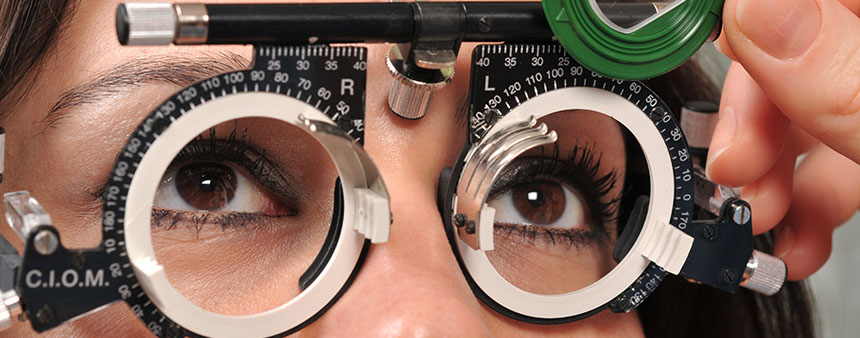The best treatment to correct eye refractive errors

What is congenital cataract and why does it occur?
2018-10-08
astigmatism treatment by refined trans prk
2018-10-24What is a refractive error?
The visual disorders (called refractive errors) that require you to wear glasses or contact lenses to correct shortsightedness, long-sightedness or astigmatism are the most common vision problems worldwide. Refractive errors occur when the curve of the cornea is irregularly shaped (too steep or too flat) or too short or long. When the cornea is of normal shape and curvature, it bends, or refracts, the light on to the retina with precision. However, when the curve of the cornea is irregularly shaped, the cornea bends light imperfectly on to the retina. This affects good vision. The goal of glasses, contact lenses and refractive surgery is to correct or improve these errors by helping images to focus closer to wall or onto the retina.
The refractive process is similar to the way a camera takes a picture. The cornea and lens in your eye act in the same way as the camera lens. The retina is similar to the film. If the image is not focused properly, the film (or retina) receives a blurry image. The image that your retina sees then goes to your brain, which tells you what the image is.
Warning Signs & Symptoms
Blurry vision, either up close or at a distance, is the most common sign of a refractive disorder. Other symptoms include:
- Eye strain
- Headaches
- Double vision
- Glare or halos around lights
Types of Refractive Eye Conditions
- Myopia: Patients with myopia (nearsightedness) have clear vision up close but blurry vision at a distance. The nearsighted eye is usually too long or the cornea is too curved. When light passes through the eye, it is focused in front of the retina. Almost all cases of nearsightedness can be corrected with a concave lens or with one of several types of refractive surgery.
- Hyperopia: Hyperopia (farsightedness) is when individuals younger than 40 can see things clearly at a distance but have a problem seeing up close. The farsighted eye is shorter than average in size and the cornea may be less curved than normal. For individuals with severe hyperopia, vision can be blurry for objects at any distance, near or far. Farsightedness is treated with a convex lens or with refractive surgery.
- Presbyopia: Presbyopia is when the eye’s lens loses its ability to focus properly due to aging. The result is the loss of near vision. Most people have some degree of presbyopia by age 40, and must use reading glasses to see up close.
- Astigmatism: Astigmatism is caused when the eye’s cornea or lens is shaped irregularly. The eye cannot focus light evenly onto the retina, resulting in focus problems and images that appear blurry or “stretched”. Astigmatism can be corrected with glasses, contacts, or with refractive surgery.
As stated above, with medical glasses, contact lenses can be treated in people who have refractive errors. Surgery may be used if the disorders is more severe.
One of the latest surgical techniques to correct the refractive errors of the eye is the refined trans PRK. This technique is completely corrected for the treatment of refractive cornea. One of the hallmarks of this approach is that laser radiation is tailored to each patient individually based on demographic parameters (such as age and gender) and individual characteristics of the individual. For this reason, the operating conditions are perfectly in line with the patient’s situation, with the degree of surgical success and visual correction in these individuals dramatically increased.
Reference:
https://www.midlandeye.com/refractive-error/




